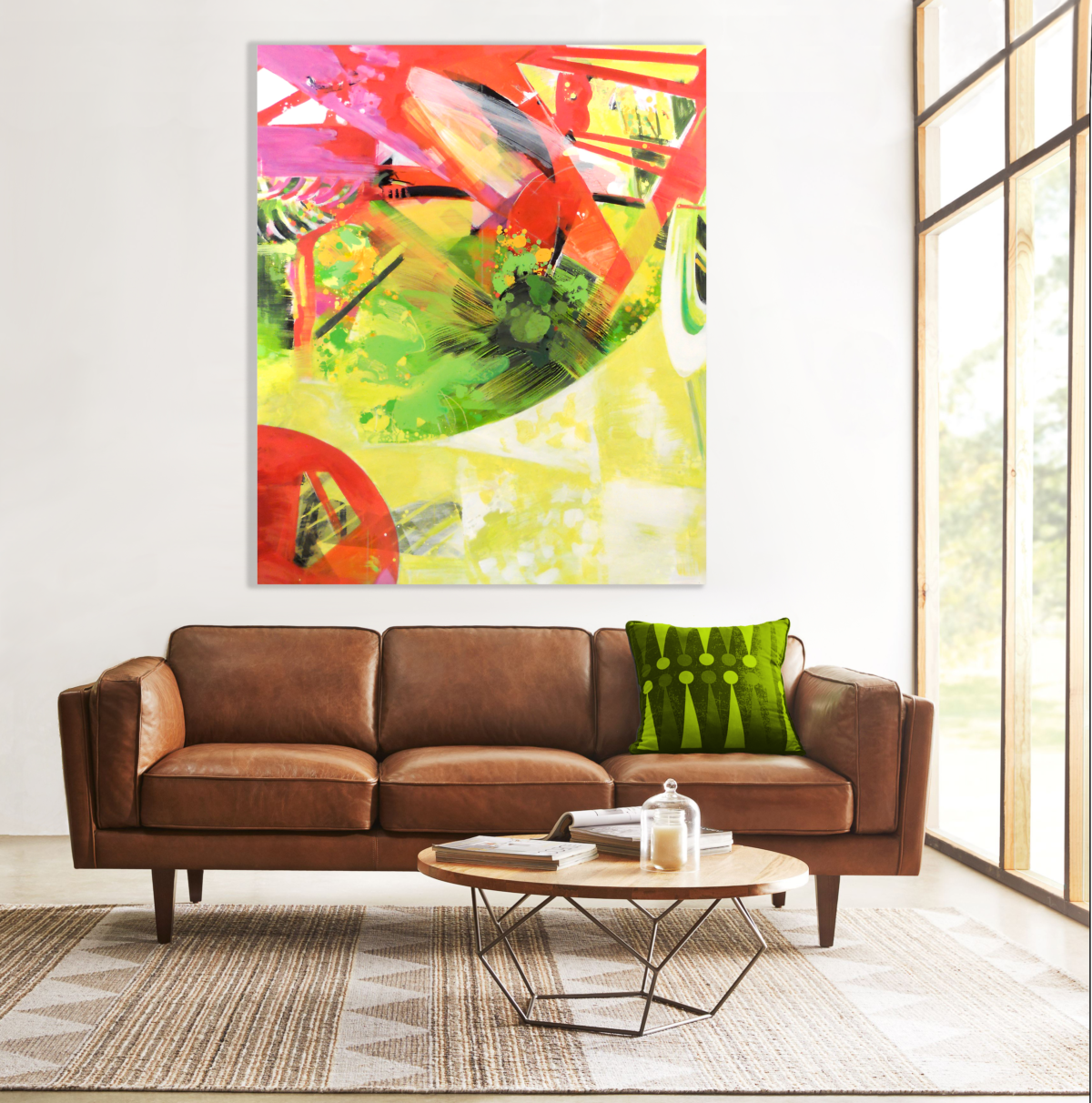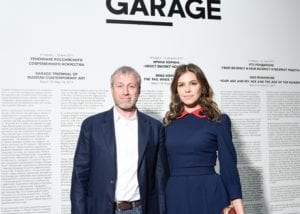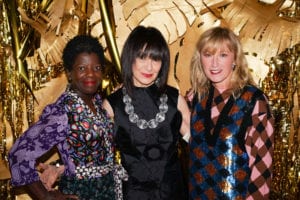Working under the theme of ⌘COPY⌘PASTE curators and artists at Spring/Break Art Show are filling the classroom-like offices of Manhattan’s Moynihan Station. With transformations such as a public bathroom converted into a floral scented dinner setting, curators have taken on the concept of space in fantastic ways—filling it, distorting it, converting it, or just plain destroying it. Out of Spring/Break’s nearly 100 exhibitors here are our top picks for exhibitions not-to-miss at this funky fair.
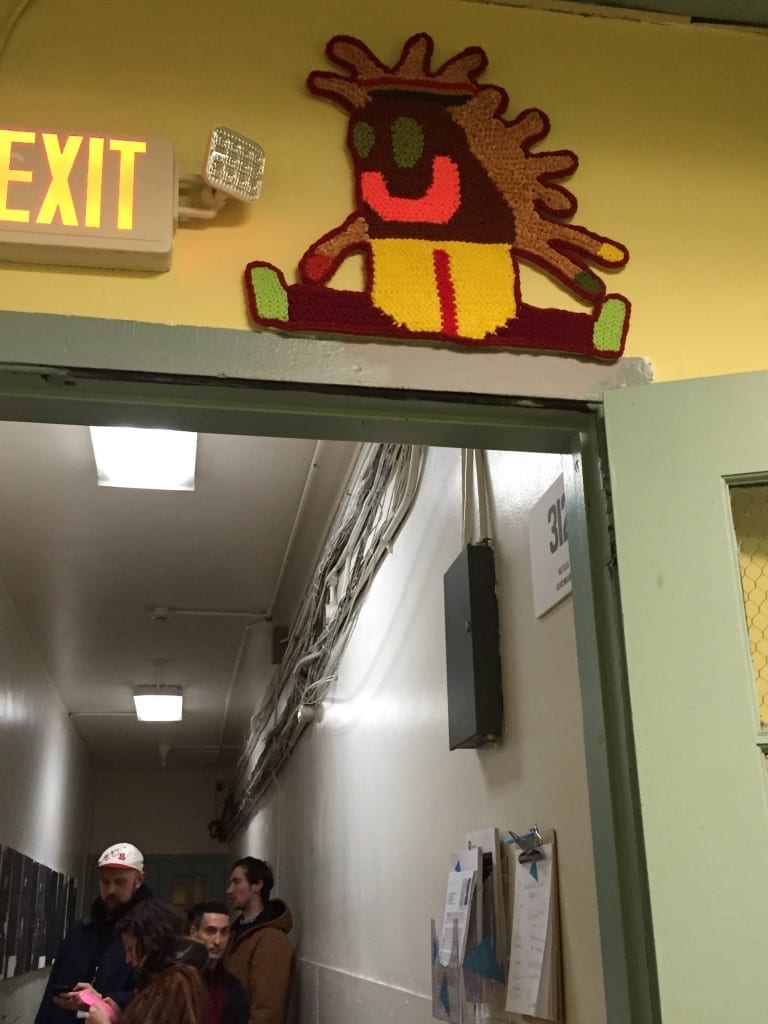
- 1. Field Projects: Caroline Wells Chandler (Room #3120)
You find them on the walls, you find them above the doorways, Caroline Wells’ tongue-in-cheek, crocheted figures tease and flirt with aspects of transgender identity. In addition to their colorful smiles and wacky-hair styles, the flipped and removed body parts of Wells’ characters reference the alteration of gender presentation and also the evolving issues around the LGBTQ community.
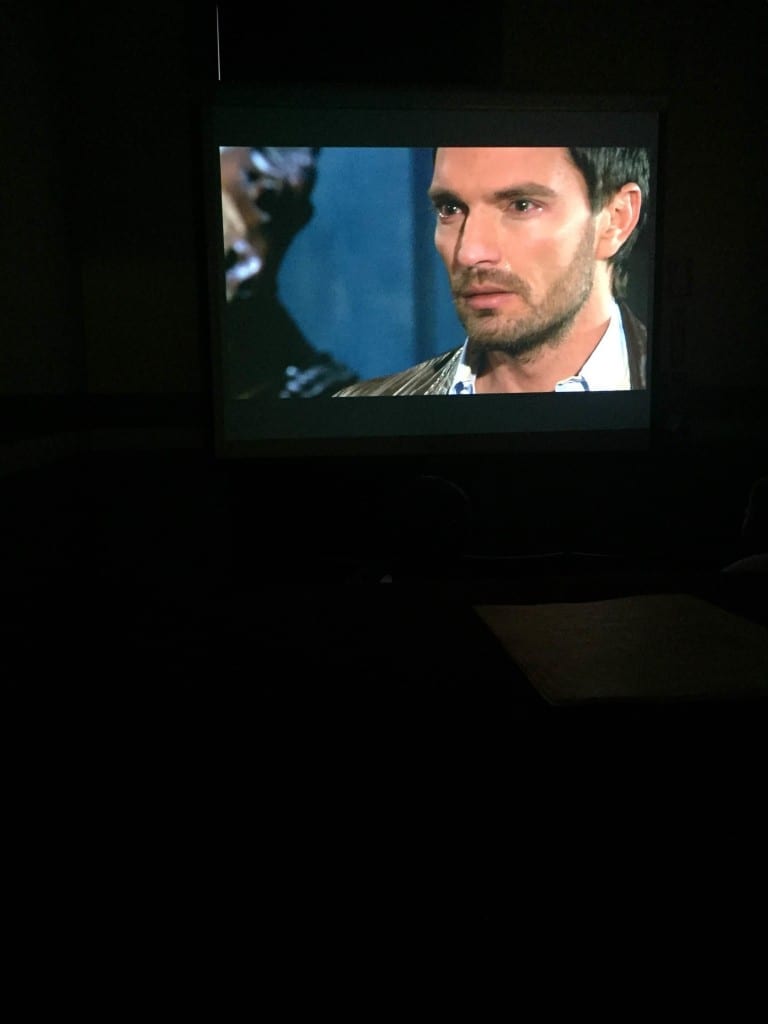
- 2. Christian Jankowski “Crying For The March of Humanity,” (2012) curated by Maureen Sullivan (4th Floor foyer)
The fourth-floor foyer was converted into a low-lit movie theater where an absurdly augmented telenovela unfolds. Collaborative artist Christian Jankowski hired the cast of La que no podía amar (The One Who Could Not Love) to reenact an entire episode with all lines of dialogue replaced with sobbing and audio-visual signs of grief.
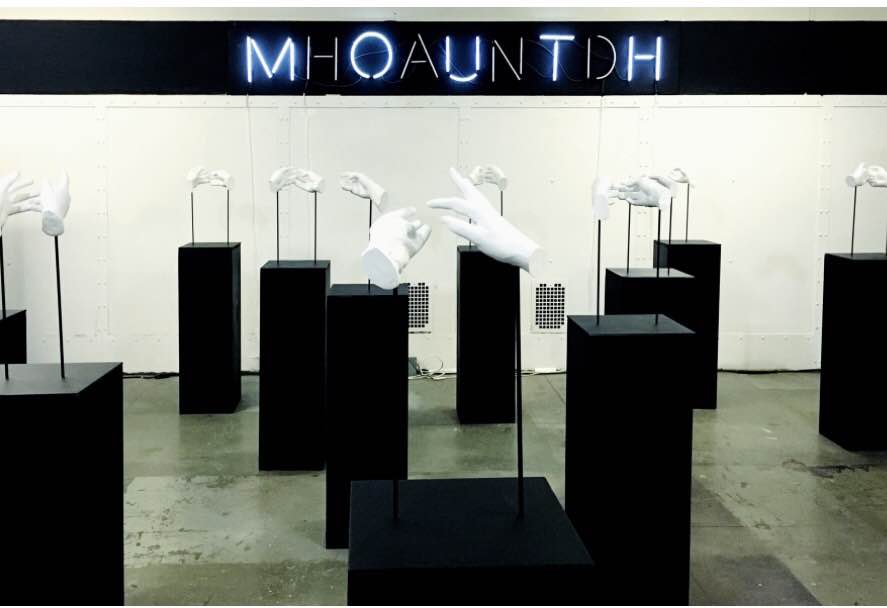
- 3. Esmeralda Kosmatopolous “MHOA UNTDH” curated by Amanda Uribe and Ché Morales (Room #4127)
Rising installation art maven Esmeralda Kosmatopolous questions the Argos evolution of speaking when you use technology versus a conversation in person or written word. Taking the concept of shifting an idea from one context to another (⌘COPY⌘PASTE) the room holds pillars broadcasting words repeatedly processed through Google translate, clay-cast hands in the act of texting, and lettered neon signs.
![Caitlind R.C. Brown & Wayne Garrett "The Deep Dark [through]," Photo: Lorraine Rubio](https://artzealous.com/wp-content/uploads/2016/03/IMG_4488-e1457013786259-1024x883.jpg)
- 4. Caitlind r.c. Brown & Waynne Garrett “The Deep Dark [through]” curated by A. Moret (Room #4127)
Sharing a large space with Kosmatopolous, Caitlind r.c. Brown and Waynne Garrett’s portal-like light installations stand in sharp contrast to a majority of the exhibitions at Spring/Break. In juxtaposition to many rooms that maximized the Closter phobic feel of the retro wood-paneled walls in some rooms, the three glowing doorways command the white walled space that curator A. Moret left bare.
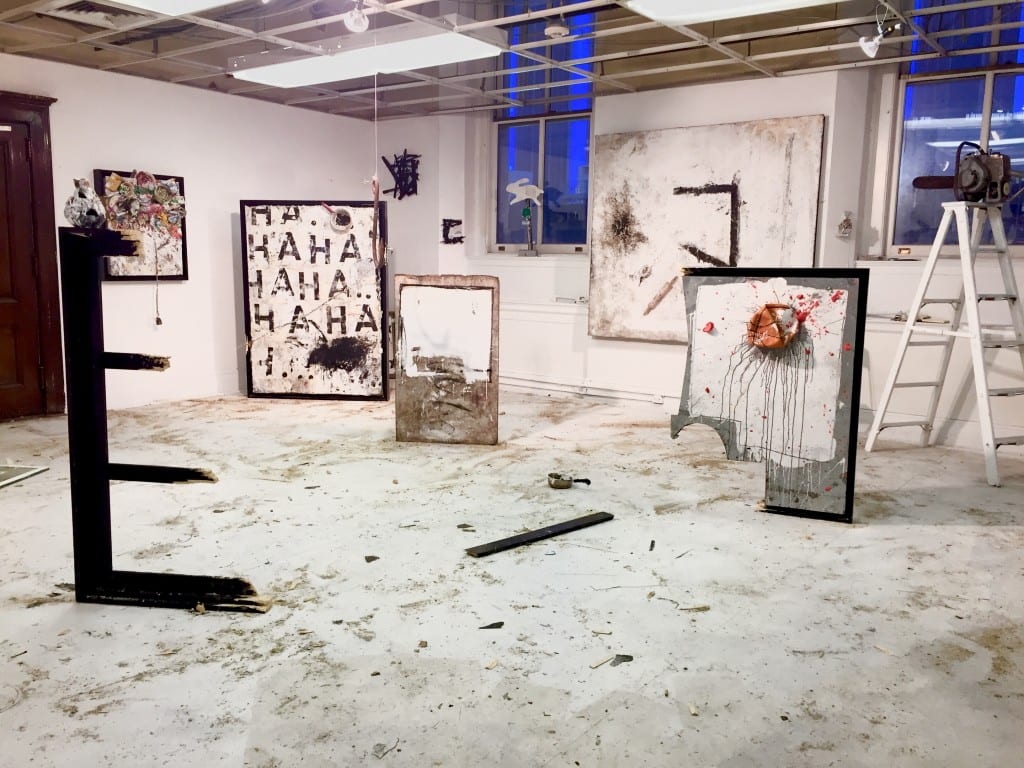
- 5. Greg Haberny Unhinged curated by Catinca Tabacaru (Room #4006)
A deconstructed room with missing ceiling tiles, partially painted floors and a saw resting on a ladder set the scene for Greg Haberny’s process-focused work. While he produces works that appear to be paintings, no paint is used in the making of them. Fracturing the process in Christopher Wool’s abrasive, text-based screen prints, such as “Apocalypse Now,” the ‘hahaha’ in Haberny’s “Untitled” (2016) is coated in ash and melted crayon applied by paper towel rolls.
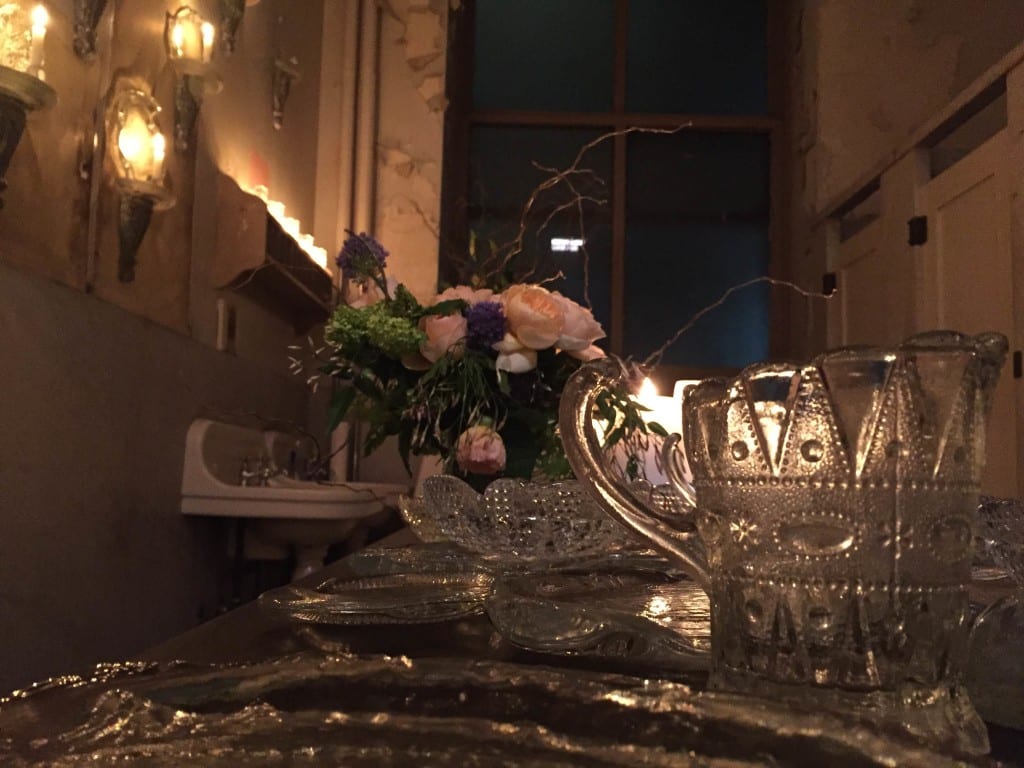
- 6. Aaron Pexa “The Lucent Parlor” curated by Cade Tompkins (Room #3103)
Whether the choice was Cade Tompkins’ or not, the reinterpretation of a third-floor public restroom into an intimate, candlelit dinner party, masked in a floral aroma, had a beautiful result.
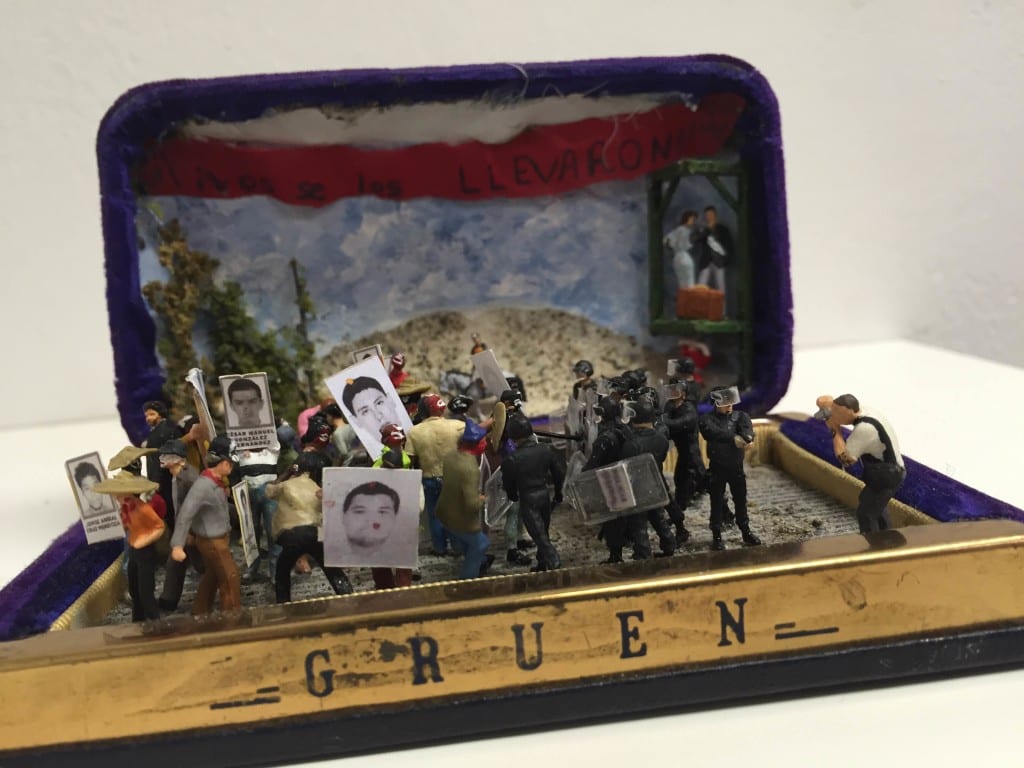
- 7. Talwst Santiago Minimized Histories curated by Madalyn Asimakis (Room #3111)
We may be in the era of the bigger the art the better, but the miniaturized ring box dioramas by artist Tawlst Santiago are attention grabbing. playing with scale and order, the mix and matched scenes is a refreshing return to the use of historical narrative.

